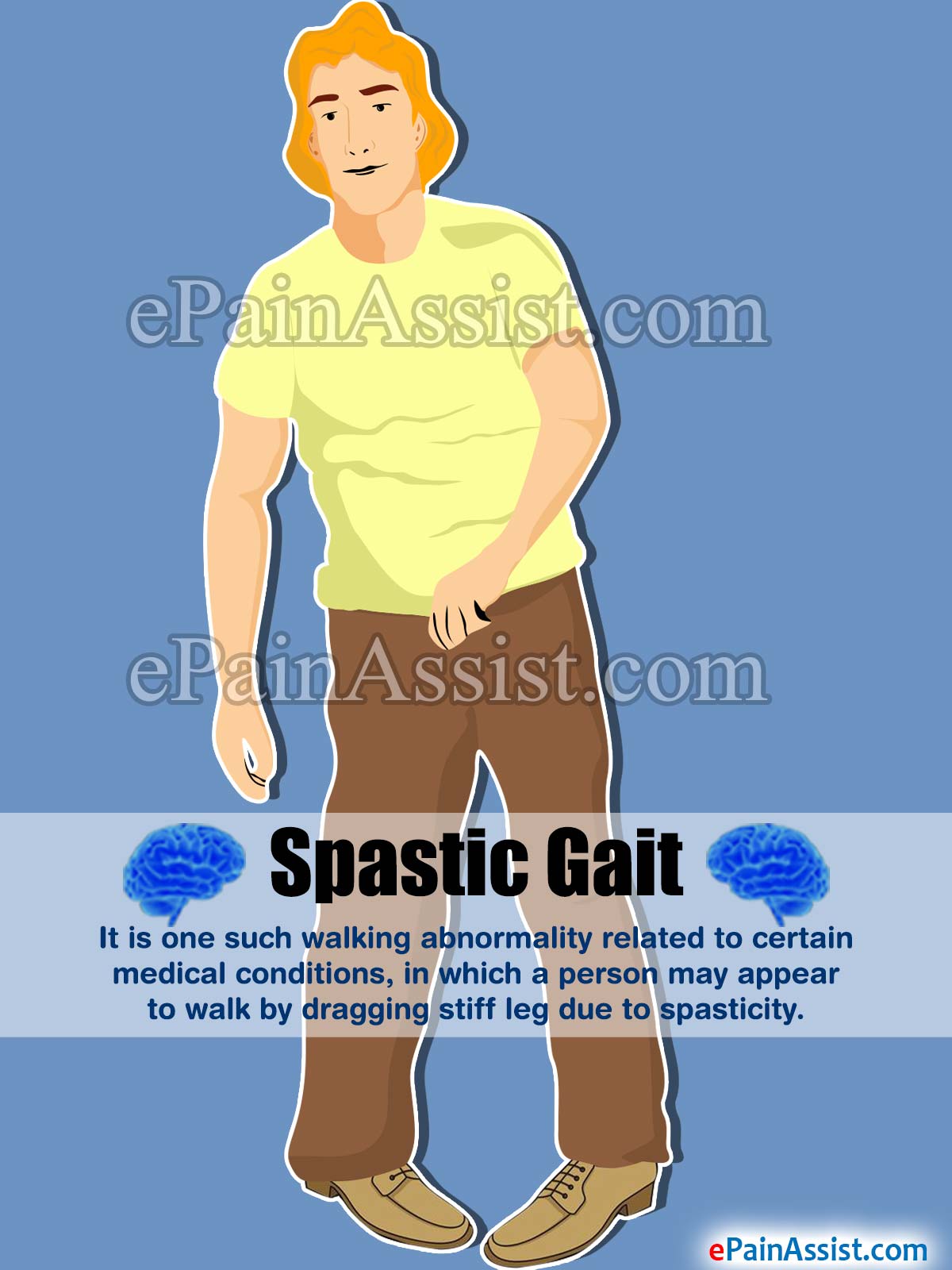A person can be known from his body language; a person’s walk is one such easily noticeable aspect. Gait is the pattern in which a person walks and is related to many physical and psychological factors. Walking abnormalities and some peculiar type of gait are commonly seen in specific medical conditions. These walking patterns generally occur uncontrollably and may arise out of certain medical disorders or trauma to the related body system.

Spastic gait is one such walking abnormality related to certain medical conditions, in which a person may appear to walk by dragging stiff leg due to spasticity.
What is Spasticity?
Spasticity is a state in which the muscles remain contracted for long. It is a result of some damage caused to the part of the brain or spinal cord, which is in charge of the voluntary movements of body parts.
As is a result of the long term muscle contractions, muscle stiffness, rigidity or tightness occurs in spasticity. This may make the flow of signals and exchange of information between the nervous system and the body muscles difficult. These abnormally stiff muscles and improper co-ordination can affect daily movements and activities including speech, movement and walking pattern or gait.
What is a Spastic Gait?
Spastic gait is a peculiar type of walking, in which a person walks stiffly; as if the feet are being dragged while walking. The spastic gait may be seen in persons with cerebral palsy but can also occur as a result of some other conditions.
A spastic gait usually arises out of stiff but weak leg muscles. It may appear as the person is trying to hold the legs together and the toes and feet are being dragged while walking. There is excessive tone and long muscle contraction of one leg giving the dragged appearance with the reduced flexibility to make smooth movements.
As the person lacks the required flexibility, the bending movements at the knees, ankles and normal flexing movements are not made, which makes the walk appear stiff. As the muscles remain contracted for long, mostly on one side, the stiff leg seems to be dragged to facilitate walking.
What Can Cause Spastic Gait?
Some conditions that can lead to spastic gait include cerebral palsy (CP), birth trauma, brain abscess, brain tumor, multiple sclerosis (MS), traumatic brain injury (TBI), stroke, some neurological disorders or some genetic disorders like Sturge-Weber Syndrome.
- Spastic Gait caused due to Cerebral Palsy – It occurs due to brain damage of the part controlling the movements and muscle tone of arms and legs. There is increased spasticity or tensed muscles with reduced flexibility. Deformities of legs are not present at birth but get developed gradually. Tight, hypertonic muscles with restricted stretching of muscles makes limb movements appear stiff causing the spastic gait.
- Spastic Gait caused due to Multiple Sclerosis – Spasticity in this condition can affect in flexor or extensor way, both of which can affect the gait. Involuntary flexion of the muscles at the back of thighs (hamstring) can cause bending of the hips and knees towards the chest. Involuntary extension of the legs causes straightening; with hips and knees remain tightly straightened and legs remain close to each other causing the stiff appearance of spastic gait.
- Spastic Gait caused due to Traumatic Brain Injury (TBI) – Damage to the brain, cerebellum or brainstem can affect important centers causing alterations in reflex signals, muscle tone, sensory perceptions and movements. A peculiar posture may be adopted after a brain injury, in which the hips and knees remain straight while the ankles are flexed, which can appear as the spastic gait.
What is the Treatment for Spastic Gait?
Spastic gait is thoroughly evaluated with clinical examination, proper history, pregnancy and birth complication details; accident, trauma or other conditions are noted. Relevant investigations and imaging studies can help in finding the cause of spasticity.
In case the underlying cause of spastic gait is treatable, appropriate treatment options are evaluated.
- Medications may be used to reduce muscle contractions typically noted in spasticity, but the risk of side effects should be properly assessed.
- Botulinum Toxin (BTA) injections may be considered sometimes for spastic or overactive muscles.
- In some cases, surgical options may be evaluated.
Rehabilitation for Spastic Gait
Rehabilitation and improvement of gait with exercises, gait and posture training is encouraged. Exercises can help in improving the spastic gait and perform activities in a better way. Rehabilitation exercise for spastic gait mostly focuses on active and passive exercises to improve the muscle functioning and walking pattern. Difficulties in standing, walking or balancing due to spastic gait are dealt with appropriate exercises and regimen.
Leg braces may be advised in some cases. Shoe inserts, splints or specific orthotics may be advised to improve the spastic gait. Additional support like a walker may be given for those with balance problems. Other sensory integration methods may be adopted, or walking barefoot and on variety of surfaces can improve stabilization.
A certified and trained physical therapist can help with rehabilitation, exercises, necessary modifications and ways to deal with the gait training at home.
- National Institute of Neurological Disorders and Stroke. (2021). Spasticity Information Page. https://www.ninds.nih.gov/Disorders/All-Disorders/Spasticity-Information-Page
- National Multiple Sclerosis Society. (n.d.). Spasticity.https://www.nationalmssociety.org/Symptoms-Diagnosis/MS-Symptoms/Spasticity
- Mayo Clinic. (2021). Cerebral Palsy. https://www.mayoclinic.org/diseases-conditions/cerebral-palsy/symptoms-causes/syc-20353999
- MedlinePlus. (2021). Spasticity. https://medlineplus.gov/ency/article/003297.htm
